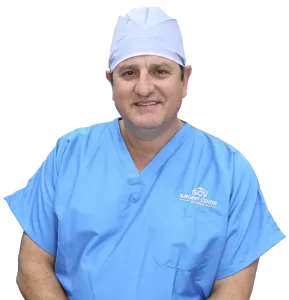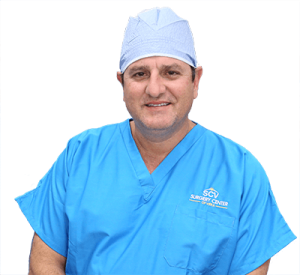
Anywhere along the spine can develop a herniated disk, but the lower back is where it most frequently does. It is also known as a protruding, bulging, or ruptured disk. It is one of the most typical causes of sciatica, leg discomfort, and lower back pain.

In their lifetimes, between 60 and 80 percent of adults will have low back discomfort. A herniated disk in some of these persons will produce low back pain and leg pain. Even though a herniated disk can be extremely painful, most people find that a few weeks or months of nonsurgical treatment makes them feel considerably better.
The 24 vertebrae that make up your spine are piled on top of one another. These bones fit together to form a canal that safeguards the spinal cord. The lower back is made up of five vertebrae. Your lumbar spine is located in this region.
The spinal cord and nerves are further components of the spine. These electrical connections convey signals from your brain to muscles as they pass through the spinal canal. Foramen, or openings in the vertebrae, are where nerve roots leave the spinal cord.
Flexible intervertebral discs are located between your vertebrae. These disks are roughly a half-inch thick, flat, and circular.
When you run or walk, intervertebral disks serve as shock absorbers. They consist of two elements:
When a disk experiences wear and tear or a sudden injury, the jelly-like nucleus pushes up against the outer ring, causing the disk to herniate. Lower back pain could result from this pressure on the outer ring.
The soft, jelly-like disk center can completely penetrate the outer ring of a herniated disk. If the pressure builds enough, the jelly-like nucleus might eventually push through the disk’s outer ring and bulge it. The spinal cord and surrounding nerve roots are put under pressure by this.
In addition to mechanical compression of the nerves, chemical irritants released by the disk material also contribute to nerve inflammation.
Sciatica is a disorder where a nerve root becomes inflamed and causes pain, numbness, and weakness in one or both of your legs.
Most frequently, natural aging-related wear and tear on the spine cause a herniated disk. The disk deterioration process is what causes this. Disks contain a significant amount of water in youngsters and young adults.
The water content in the disks diminishes with aging, making the disks less flexible. The gaps between the vertebrae get smaller and the disks start to contract. The disks become more vulnerable to herniation as a result of natural aging. A herniated disk can also result from trauma, like a fall.
Your risk of a herniated disk may be increased by specific variables. These consist of:
Gender
Herniated disks are most common in men between the ages of 20 and 50.
Incorrect lifting
A herniated disk might develop if you lift heavy objects with your back muscles rather than your legs. Additionally, twisting when lifting puts your back at risk. Your spine may be protected if you lift with your legs rather than your back.
Weight
The disks in your lower back are put under additional strain if you are overweight. Repetitive motions that put stress on your spine A lot of vocations require physical exertion. Some involve repetitive bending, lifting, tugging, and twisting. Your back can be protected by using safe lifting and movement techniques.
Driving frequently
Long durations of sitting still combined with the vibration from the car engine might strain your disks and spine. A herniated disk is one of several illnesses that can be avoided with regular exercise.
Smoking is thought to reduce the oxygen flow to the disk and hasten its deterioration.
The initial sign of a herniated disk is typically a low back ache. This soreness may subside after a few days. Other signs can include:
Sciatica
The back of one leg is affected by an intense, frequently shooting pain that starts in the buttock. The spinal nerve is pressed upon, which is the cause of:
This is highly uncommon and can be a sign of cauda equina syndrome, a more serious issue. Compression of the spinal nerve roots is the core cause of this illness. It demands emergency medical care.
Your doctor will do a physical exam after going over your symptoms and medical background.
The following tests could be part of the exam:
Imaging Research
A scan using magnetic resonance imaging (MRI). Intervertebral disks and other soft tissues in the body can be seen on an MRI scan. To help with the diagnosis and to find out which spinal nerves are impacted, your doctor might request an MRI scan.
A computerized tomography (CT) scan or a CT myelogram may be prescribed in place of an MRI if you are unable to endure one. A herniated disk in the lower back is seen on an MRI scan (arrow). The disk is pressing against the spinal cord and nerve roots as it protrudes toward the spinal canal.
The majority of people who have a herniated lumbar disk see a gradual recovery over a few days to weeks. By three to four months, the majority of patients are usually symptom-free. Nevertheless, some individuals do go through painful phases while they recuperate.
Non-Surgical Therapy
The first course of therapy for a herniated disk is typically nonsurgical. Nonsurgical therapies could consist of resting in bed for one to two days and can typically help with back and leg pain. But don’t let yourself be off your feet for too long. When you start up again, try to follow these steps:
Physical treatment
Your lower back and abdominal muscles will become stronger with the help of specific exercises.
An epidural steroid injection
By lowering inflammation, an injection of a cortisone-like drug into the area surrounding the nerve may offer momentary pain relief. There is strong evidence that epidural injections can effectively reduce pain in many people for whom six weeks or more of other nonsurgical treatments have been ineffective.
A small increase in your risk of infection may result from receiving an epidural steroid injection within three months following surgery, according to some evidence. With your surgeon, go over these risks:
It is significant to highlight that the herniated disk is not healed by these nonsurgical procedures. Instead, they can aid in symptom relief while your body attempts to mend the disk. The disk herniation frequently gradually disappears and is reabsorbed by the body naturally over time.
Surgery is necessary for a proportion of lumbar disk herniation patients. Only when nonsurgical measures have failed to cure uncomfortable symptoms are patients with the following conditions often indicated for spine surgery:
Microdiscectomy
Microdiscectomy is the most frequent technique done to treat a single herniated disk. A small incision is made at the site of the disk herniation, and a microscope is frequently used during the treatment.
The spinal nerve is compressed by the herniated portion of the disk as well as any other pieces that are present. If there are multiple levels of disk herniations, a more extensive operation would be necessary.
Rehabilitation
Your physician or a physical therapist can suggest a straightforward walking regimen (such as 30 minutes daily) along with particular exercises to help your back and legs regain strength and flexibility. You might be restricted from bending, lifting, and twisting for the first few weeks following surgery to lower the chance of recurrent herniation.
Up to 20 to 25% of people who have surgical or nonsurgical therapy for a disk herniation will experience another one in their lifetime. The danger of nonsurgical treatment is that it can take a while for your symptoms to go away.
Patients may have less improvement in pain and function than those who choose surgery earlier if they explore nonsurgical treatment for an excessive amount of time before making their decision.
According to studies, the surgical outcomes are not as favorable at roughly 9 to 12 months as they are if you have surgery before 9 months.
When it comes to how long you should try nonsurgical treatments before thinking about surgery, your doctor will discuss this with you.
Surgical cautions
Every surgical treatment comes with certain modest hazards. These consist of bleeding, infection, and anesthesia-related reactions. The following are specific side effects of a ruptured disk surgery:
The outcomes of microdiscectomy surgery are typically excellent. Leg pain typically improves more for patients than back discomfort. After a time of rehabilitation following surgery, the majority of patients can return to their regular activities. Pain is usually the first symptom to go away, then the leg’s general strength, and finally feeling.
The treatment of disk herniation has been the subject of much investigation in recent years. Your doctor will be able to discuss the benefits and drawbacks of surgical and non-surgical treatment with you.
The Deuk Spine Institute encourages and welcomes you to contact us today regarding any questions or concerns you may have about your current situation…
If you or someone you love is experiencing any of the preceding symptoms outlined in this article, it’s time to get a FREE Consultation and MRI Review with the Deuk Spine Institute. We can help relieve your pain and get you back to living life without limitations!

